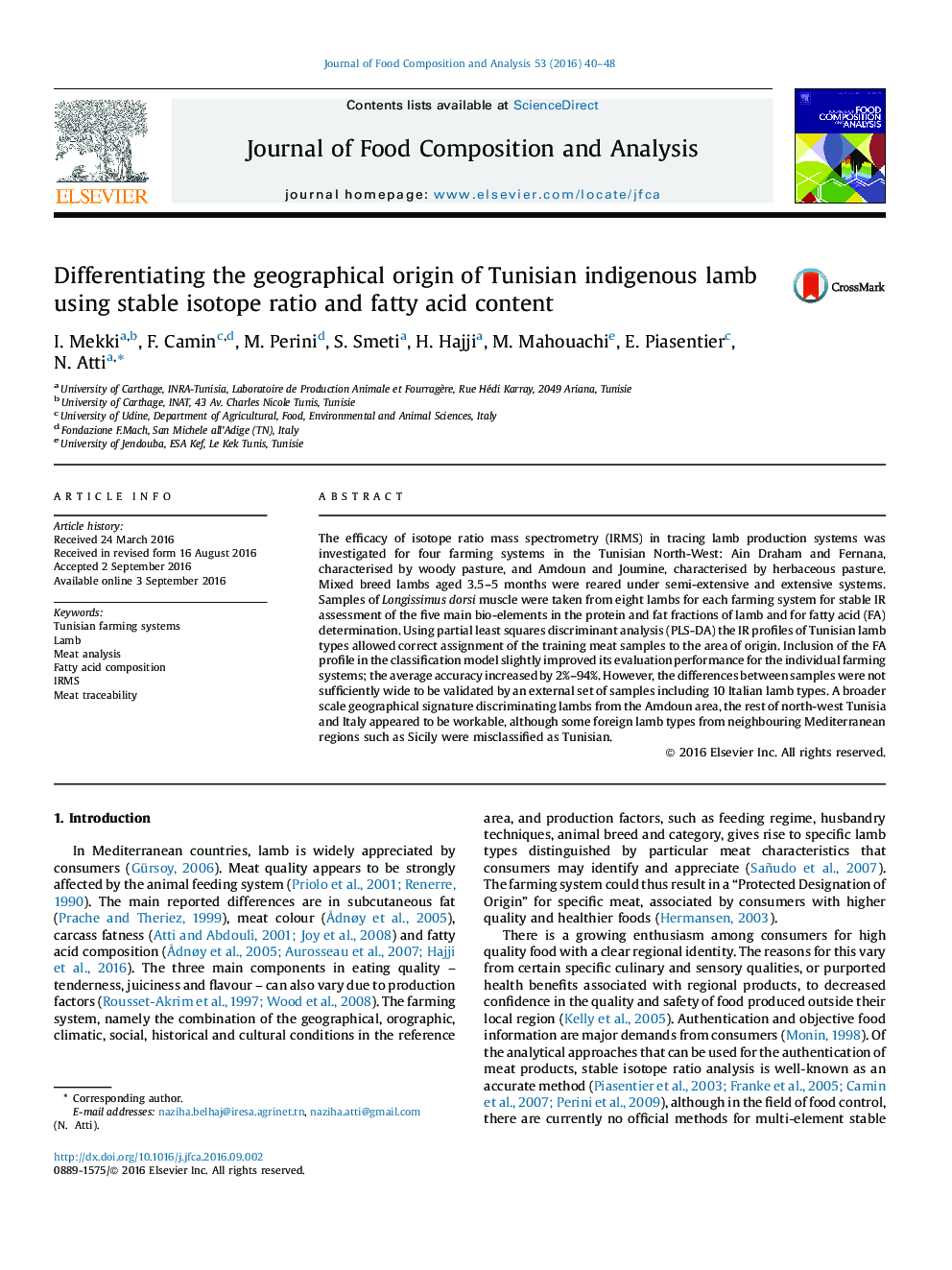| کد مقاله | کد نشریه | سال انتشار | مقاله انگلیسی | نسخه تمام متن |
|---|---|---|---|---|
| 5137023 | 1494489 | 2016 | 9 صفحه PDF | دانلود رایگان |
- The fatty acid profile of woody pasture is different to that of herbaceous pasture.
- Meat nâ6/nâ3 ratios of lambs from all systems were appropriate.
- Isotope ratios make it possible to distinguish lambs from different areas of Tunisia.
- Feed and geographical IR discriminate Tunisian from Italian lambs.
- Using IR some lambs of nearby region, Sicily, were misclassified as Tunisian.
The efficacy of isotope ratio mass spectrometry (IRMS) in tracing lamb production systems was investigated for four farming systems in the Tunisian North-West: Ain Draham and Fernana, characterised by woody pasture, and Amdoun and Joumine, characterised by herbaceous pasture. Mixed breed lambs aged 3.5-5 months were reared under semi-extensive and extensive systems. Samples of Longissimus dorsi muscle were taken from eight lambs for each farming system for stable IR assessment of the five main bio-elements in the protein and fat fractions of lamb and for fatty acid (FA) determination. Using partial least squares discriminant analysis (PLS-DA) the IR profiles of Tunisian lamb types allowed correct assignment of the training meat samples to the area of origin. Inclusion of the FA profile in the classification model slightly improved its evaluation performance for the individual farming systems; the average accuracy increased by 2%-94%. However, the differences between samples were not sufficiently wide to be validated by an external set of samples including 10 Italian lamb types. A broader scale geographical signature discriminating lambs from the Amdoun area, the rest of north-west Tunisia and Italy appeared to be workable, although some foreign lamb types from neighbouring Mediterranean regions such as Sicily were misclassified as Tunisian.
Journal: Journal of Food Composition and Analysis - Volume 53, October 2016, Pages 40-48
